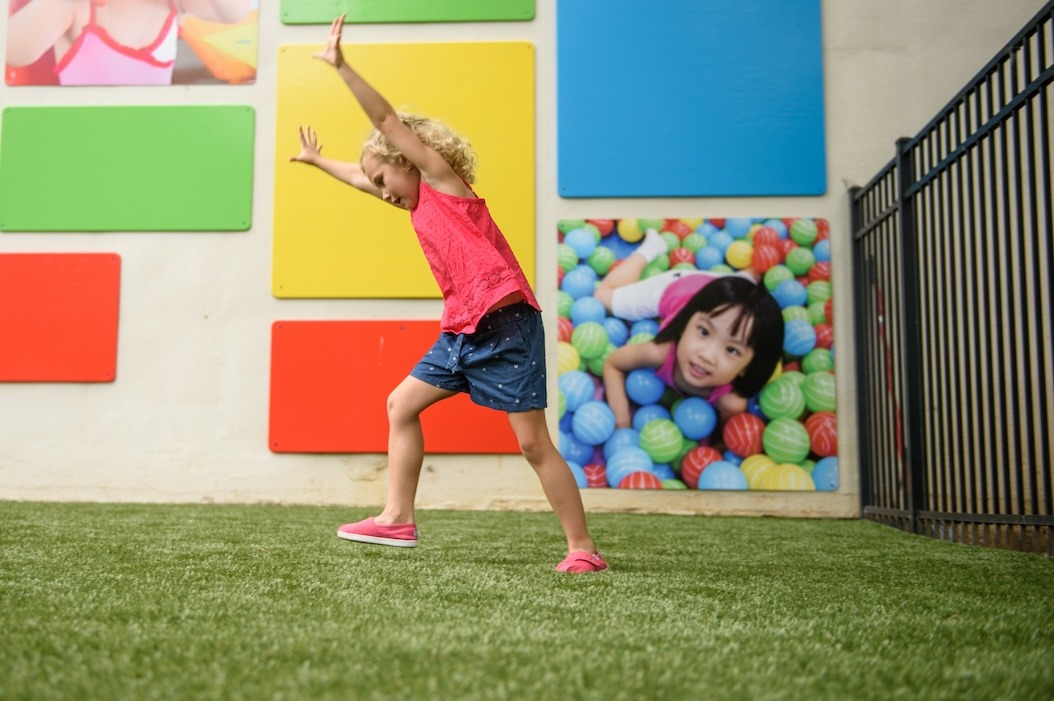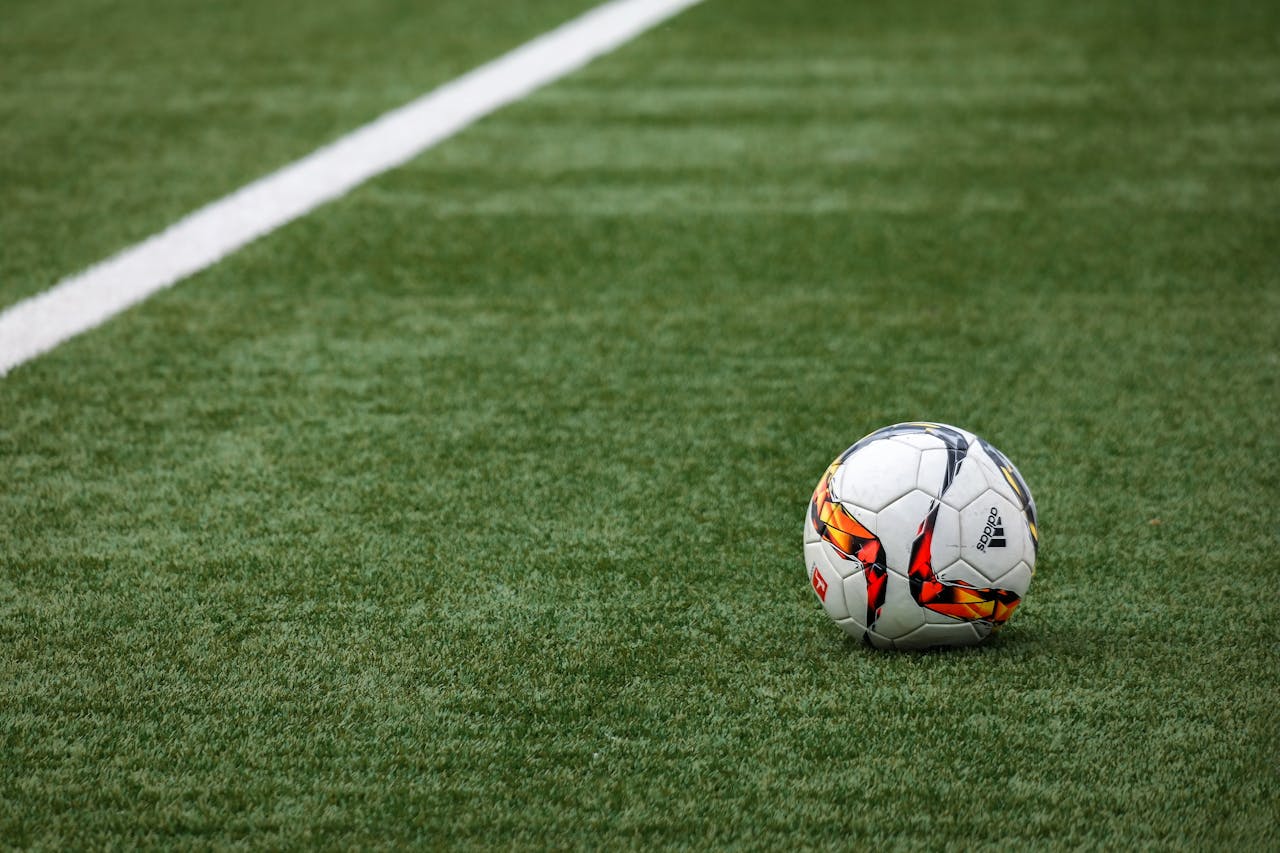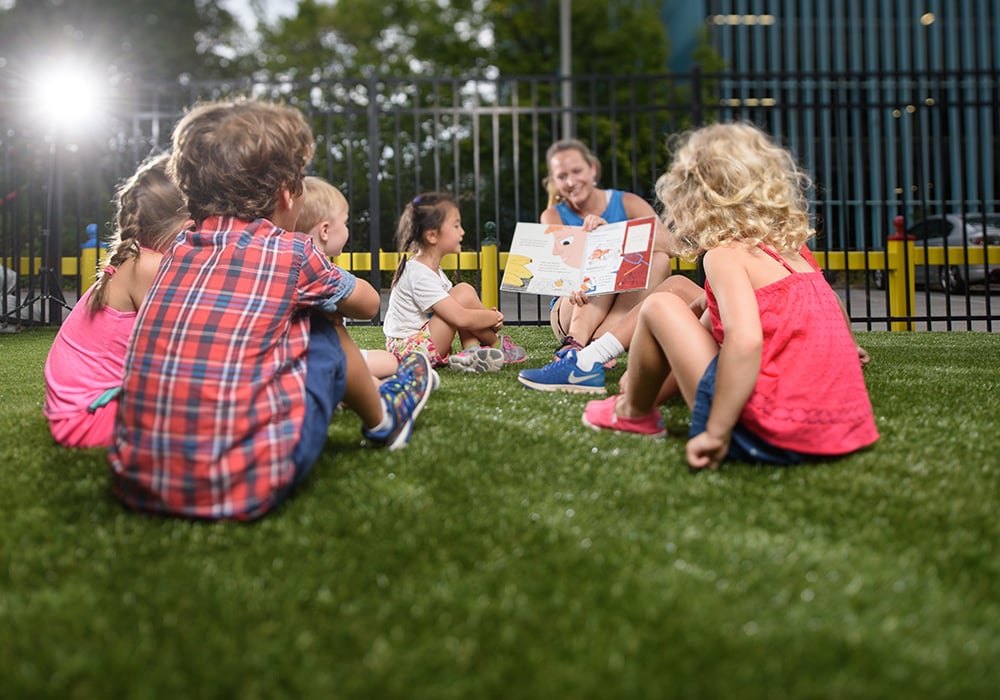When it comes to creating safer, accessible, and long-lasting play environments, schools face a big decision: choosing the right playground surface. While traditional options like wood chips and rubber mulch have served their purpose, more administrators are discovering the superior benefits of modern playground turf. But not all playground grass systems are created equal, and understanding the technical requirements can mean the difference between a compliant safety surface and a costly mistake.
If you're evaluating playground turf for your school, there are three essential factors you need to consider beforehand: fall height ratings, ADA compliance, and proper installation. Let's break down what every school administrator, facilities manager, and playground decision-maker needs to know.
Understanding Fall Height: The Foundation of Playground Safety
Fall height — also known as critical height — represents the maximum height from which a child can fall onto a surface without risk of life-threatening head injury. This isn't just a technical specification; it's the most important safety metric for any playground surface.
Playground turf systems are engineered to provide specific fall height ratings based on their construction. The combination of turf pile height, backing systems, and shock-absorbing underlayment work together to create a cushioned surface that protects children during falls.
Here's what schools need to know about fall height ratings for playground turf:
ASTM F1292 Compliance is Non-Negotiable. This standard establishes testing procedures for impact attenuation of playground surfaces. Any playground turf you consider must meet or exceed ASTM F1292 requirements for the equipment heights in your play area.
Different Equipment Requires Different Ratings. A slide with a 6-foot deck height requires adequate fall height protection in the landing zone. Swing sets, climbing structures, and elevated platforms each have specific fall zones that must be protected with appropriately rated surfaces.
Fall Height Degrades Over Time Without Proper Maintenance. While high-quality playground turf maintains its protective properties far longer than loose-fill materials like wood chips, proper maintenance ensures consistent safety performance throughout the surface's lifespan.
Modern playground turf systems like those from SprintPlay are specifically engineered with safety as the primary design consideration. Advanced backing technologies and fiber construction create surfaces that deliver reliable fall height protection while maintaining durability under constant use.
For example, SprintPlay Optimum, our gold-standard artificial turf system, features Dual-Fiber Technology for exceptional durability and IPEMA-certified for up to 12' fall protection.
ADA Compliance: Creating Accessible Play Spaces
The Americans with Disabilities Act (ADA) requires that playground surfaces provide accessible routes to and throughout play areas. This means the surface must be firm, stable, and slip-resistant—criteria that eliminate many traditional playground surfaces from consideration.
Playground grass engineered for accessibility offers significant advantages:
Wheelchair and Mobility Device Access. Unlike loose-fill materials that can create barriers for wheelchairs, walkers, and other mobility devices, properly installed playground turf creates a firm, stable surface that allows all children to access play equipment independently.
ASTM F1951 Compliance for Accessibility. This standard measures the accessibility performance of playground surfaces. Quality playground turf systems meet ASTM F1951 requirements, ensuring wheelchair maneuverability while maintaining necessary impact attenuation properties.
Year-Round Accessibility. Wood chips compact, rubber mulch shifts, and both become challenging to navigate when wet. Playground turf with advanced drainage systems remains accessible in all weather conditions, ensuring consistent ADA compliance regardless of rain or moisture.
Maintenance Efficiency for Compliance. Traditional loose-fill surfaces require constant redistribution to maintain both accessibility and safety compliance. Playground grass eliminates this ongoing maintenance burden while providing superior accessibility performance.
Schools must consider that ADA compliance isn't optional — it's a legal requirement. But beyond compliance, accessible playground turf creates truly inclusive play environments where children of all abilities can play together without barriers.
Proper Installation: Where Safety and Performance Begin
Even the highest-quality playground turf will fail to perform if improperly installed. Professional installation following manufacturer specifications isn't just recommended, it's essential.
Base Preparation Creates the Foundation. The subsurface beneath playground grass must be properly graded, compacted, and leveled. Inadequate base preparation leads to settling, drainage issues, and compromised fall height ratings. Professional installers understand soil conditions, proper compaction techniques, and drainage requirements specific to playground applications.
Shock Pad Selection and Installation. Most playground turf systems require shock-absorbing underlayment to achieve the required fall height standards. The type, thickness, and installation method of this padding layer directly impacts safety performance.
Seaming and Infill Application. Playground turf installations involve multiple panels that must be seamed together invisibly and securely. Improper seaming creates trip hazards and points of failure. Similarly, infill materials must be applied at specific rates and properly brushed to achieve designed performance characteristics.
Drainage Integration. Schools in regions with significant rainfall need playground grass systems with engineered drainage. Proper installation ensures water flows away from the play area quickly, maintaining safety and usability while preventing standing water that can compromise the surface.
Many schools make the mistake of viewing installation as a cost to minimize. In reality, professional installation by certified teams is an investment in safety, performance, and longevity. Improper installation can void warranties, create safety hazards, and lead to premature failure — ultimately costing far more than the initial savings.
The Total Cost Perspective for School Budgets
While initial costs matter to school budgets, smart administrators evaluate the total cost of ownership over the surface's lifespan.
Traditional surfaces require ongoing maintenance costs that accumulate significantly:
- Constant replenishment of loose-fill materials
- Labor for raking, leveling, and redistribution
- Periodic depth testing for safety compliance
- Increased cleaning and foreign object removal
- Replacement due to degradation and displacement
Quality playground turf installations require minimal maintenance beyond periodic cleaning and grooming. When you calculate 10-15 years of maintenance savings, drainage improvements, extended usability, and reduced safety incidents, the total cost equation often favors premium playground grass systems.
Additionally, well-maintained playground turf positively impacts school image and community perception—factors that matter for enrollment, funding, and community support.
Choosing the Right Partner for Your School Playground
Selecting playground turf involves more than comparing product specifications. Schools need partners who understand educational environments, safety regulations, budget constraints, and long-term performance requirements.
Look for providers who offer:
- IPEMA-certified products that meet ASTM safety standards
- Detailed fall height data specific to your equipment configuration
- Professional installation teams with playground-specific experience
- Comprehensive warranties that protect your investment
- Maintenance support to ensure long-term performance
The right partnership transforms playground turf installation from a procurement project into a long-term solution that serves everyone for years to come.
SprintPlay: Engineered Solutions for School Playgrounds
When your school is ready to upgrade to high-performance playground turf, SprintPlay offers two engineered solutions designed specifically for educational environments:
- SprintPlay Optimum sets the gold standard for playground safety with its innovative Dual-Fiber Technology that creates an ultra-dense surface for exceptional durability and consistent play. This system is engineered for high-traffic school playgrounds where safety, performance, and longevity are non-negotiable.
- SprintPlay Elite delivers versatile, high-performance artificial turf for playgrounds and outdoor fitness spaces with its durable monofilament fiber construction and specialized 20oz backing system. Elite provides schools with a cost-effective solution without compromising on safety or quality standards.
Both systems meet stringent safety standards, deliver superior ADA compliance, and are backed by SprintPlay's commitment to proper installation and long-term performance.
Contact SprintPlay today to discuss your school's specific needs, review fall height requirements for your equipment, and explore which playground turf solution is right for your facility. Our team of playground surface experts will work with you to design, specify, and install a system that meets safety standards, stays within budget, and serves your school community for years to come.


